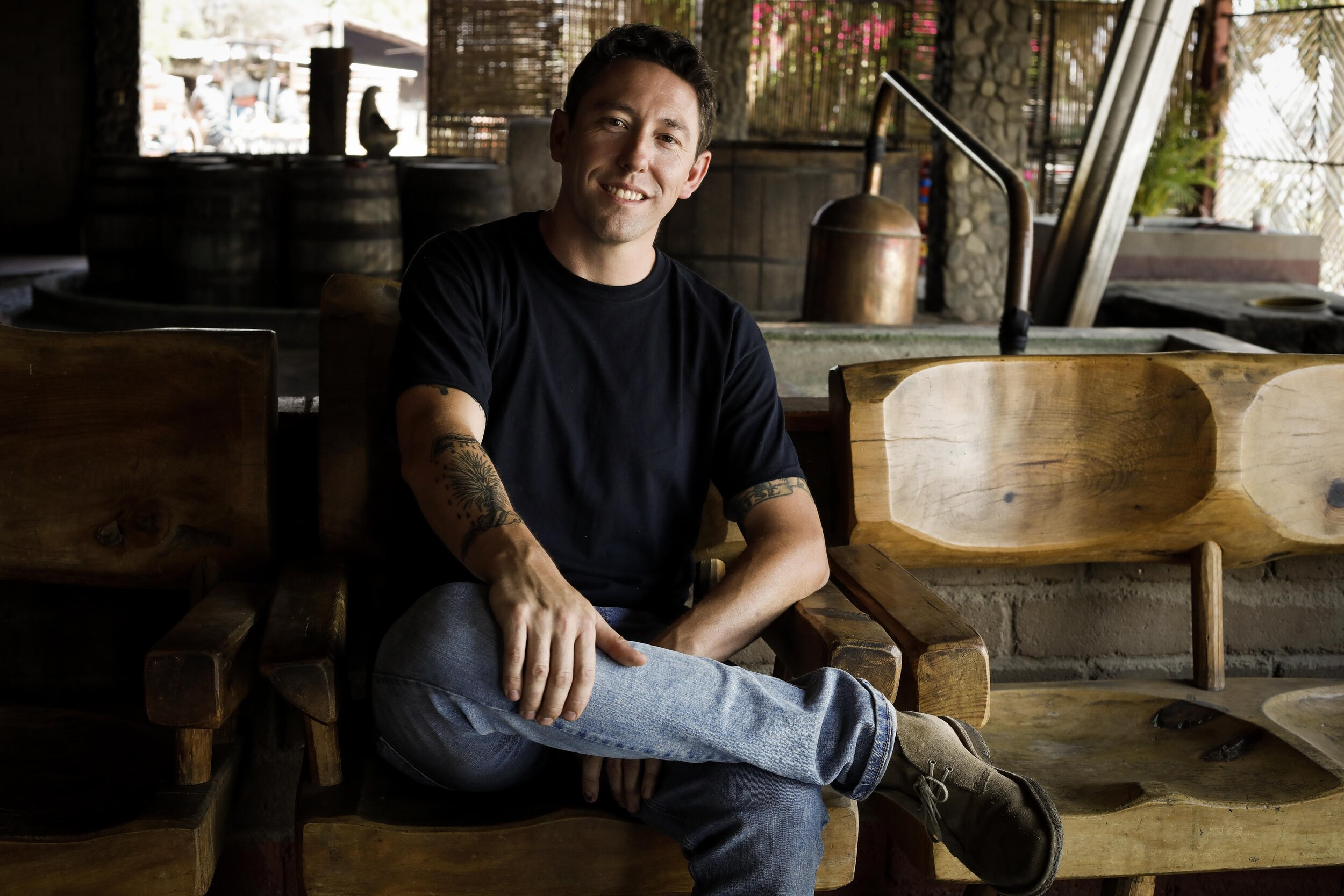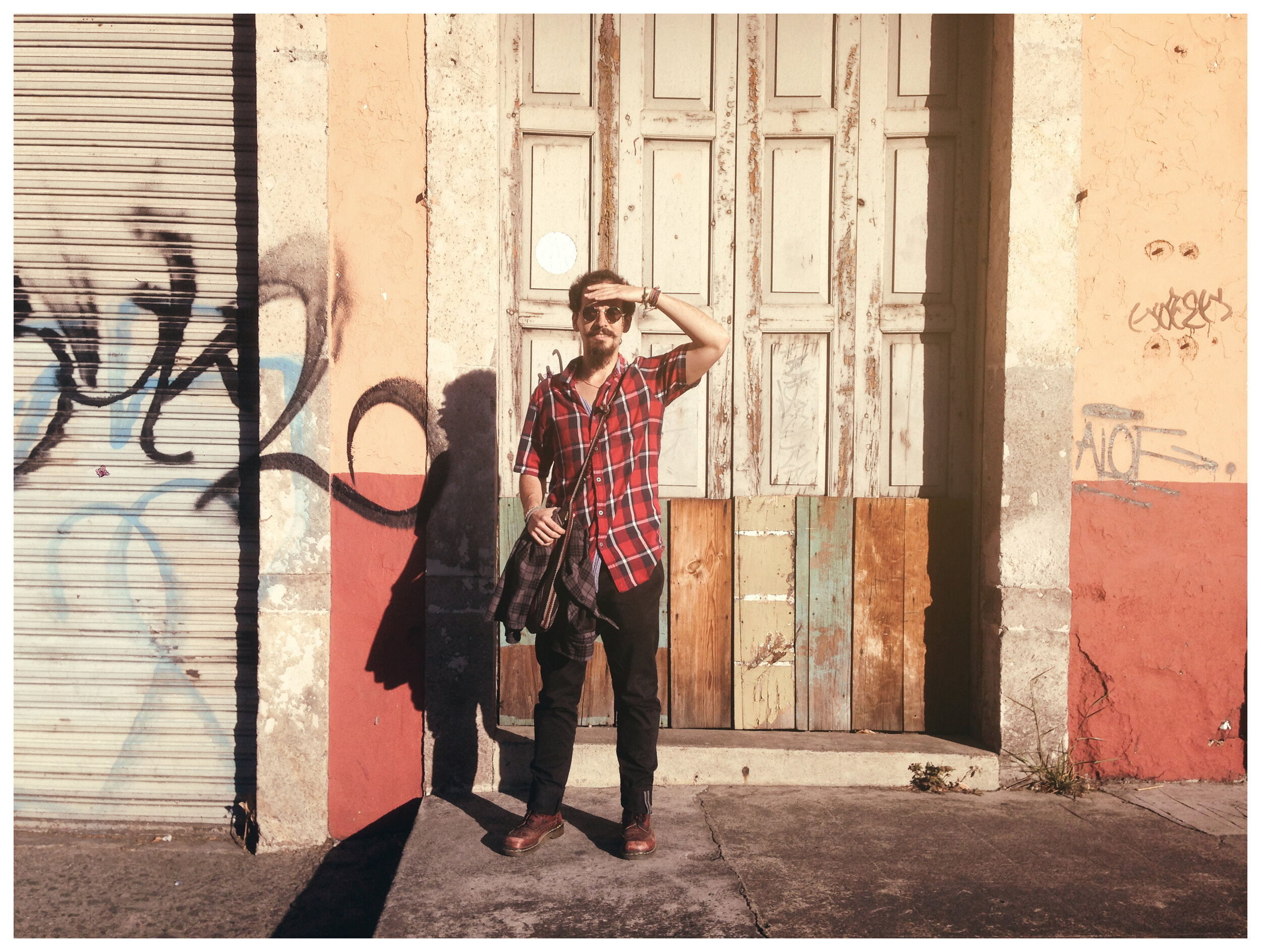THE FILMMAKERS
STEPHAN WERK
DIRECTOR & EXECUTIVE PRODUCER
For me, the journey to create Sons of Mezcal is more powerful than anything I could ever explain. It lives deep in my heart and soul everyday, as it has become a major part of who I am today. When I think about Sons of Mezcal, rather then hyper-focus on the nitty-gritty production details of a 3 year long journey to create a work of art, my heart immediately rushes with respect and gratitude for all of the families and crew who greeted me with open arms to bring this story to fruition. As we say in our tagline, “The film transports you into this living history”. Our goal was to observe the families daily lives, in large part to better understand the generational passing of knowledge that is fundamental to the sustainability of mezcal as a symbol of Mexican culture. Throughout the film, Don José Cortés provides an unscripted reflection of his mezcal experience in his native Zapotec language.
DANNY DORAN
EDITOR
Editorially, the biggest challenge was without a doubt the language barrier. My Spanish is limited, and the film is in Spanish and the indigenous language of Zapotec. This forced me to work on telling a story through body language and visual cues until the footage was translated, which in and of itself was a time-consuming process. I looked mostly for interactions between characters along with non-verbal indicators that helped me make decisions. Once the language was properly translated, I was able to go back and refine the scenes to be more concise. Editing Sons of Mezcal allowed me to reflect upon history, tradition, and what it means to be a part of something that is much larger than one individual. It was a true community effort to complete and a beautiful film to be a part of.
TONY WHITE
CO-STORY EDITOR
I met Stephan Werk in a dimly lit mezcal bar in Oaxaca when he was filming Sons of Mezcal. I had just moved there to work as a freelance journalist and bartend in said mezcaleria. We became fast friends and he later asked me to come onboard to help him craft the film’s narrative. He showed me the raw material; stunning images, crisp, evocative audio, intense and tender moments captured on film. It was beautiful footage, but it needed to be woven together to tell the story of these families as they celebrate and preserve their culture, and the importance of passing their traditions on to the next generation.
JACKSON Jarvis
CINEMATOGRAPHER
It was a true privilege to work as Cinematographer for Sons of Mezcal. What an incredible place, and what incredible people. It’s always an interesting challenge, sorting out the approach for shooting a documentary. Sometimes, it’s appropriate to script everything and guide the story where you want it to go. But in our case, I wanted the cinematography to be patient, spontaneous, and respectful. So we used the camera as a mirror—a no-frills reflection of life as a mezcalero. I found myself listening as much as looking, since often the sounds of the process were as fascinating as the visuals. Not much of what we shot was planned, and the magic was often in the quiet moments: an exchange of looks, the grasp of a hand, sunlight dancing in the dust. After all, the mezcaleros of the film are quiet and observational people. It only felt right to make the camera feel the same.
EDUARDO V.C
COMPOSER
With the Requinto and Jarana, for example, I used a lot of rhythmic “rasgueo” which is when you scratch the strings to produce a chord but I would dampen the strings with a piece of cloth so that only the texture of the scratch would come across, without the notes. Related to this, it’s worth mentioning that I generally love to work with spoken word/poetry in my more experimental collaborations. Since everything Don José is charged with power, I would approach his voice as if it was an instrument, and have the rest of the music react to it. I would say that the Quiote represents the spiritual character and the Requinto melodies represent the humans interacting with it.The use of Quiote opened the door to the idea of using traditional Mexican instruments but, being the experimenter, I had little interest in using them in their traditional style.
ADAM SOLTIS
LOCATION SOUND
While recording sound for Sons of Mezcal my approach was to focus on the little details of each location. With many scenes having little dialogue, I was free to explore the rich soundscapes of the Oaxacan agave fields. I would capture the wind as it sliced between blades of agave in the early morning and contrast it with the sharp chop of a machete through a quiote. I remember the sound of fermenting mezcal bubbling in the palenque as a horse clacks its hooves and pulls a rumbling stone around the tahona. Oaxaca is as unique audibly as it is visually, and I hope that translates in the film.









